Abstract
Pigeons' choice between reliable (100%) and unreliable (50%) reinforcement was studied using a concurrent-chains procedure. Initial links were fixed-ratio 1 schedules, and terminal links were equal fixed-time schedules. The duration of the terminal links was varied across conditions. The terminal link on the reliable side always ended in food; the terminal link on the unreliable side ended with food 50% of the time and otherwise with blackout. Different stimuli present during the 50% terminal links signaled food or blackout outcomes under signaled conditions but were uncorrelated with outcomes under unsignaled conditions. In signaled conditions, most pigeons displayed a nearly exclusive preference for the 100% alternative when terminal links were short (5 or 10 s), but with terminal links of 30 s or longer, preference for the 100% alternative was sharply reduced (often to below .5). In unsignaled conditions, most pigeons showed extreme preference for the 100% alternative with either short (5 s) or longer (30 s) terminal links. Thus, pigeons' choice between reliable and unreliable reinforcement is influenced by both the signal conditions on the unreliable alternative and the duration of the terminal-link delay. With a long delay and signaled outcomes, many pigeons display a suboptimal tendency to choose the unreliable side.
Full text
PDF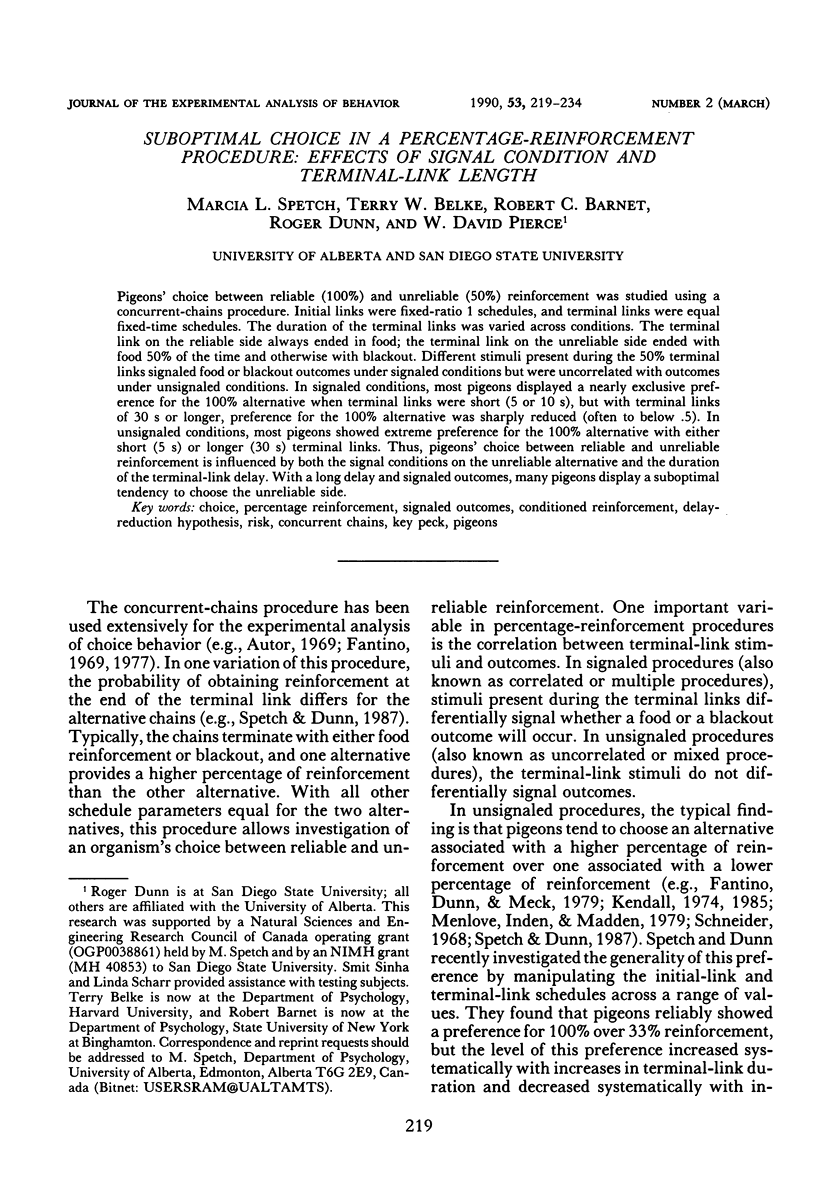
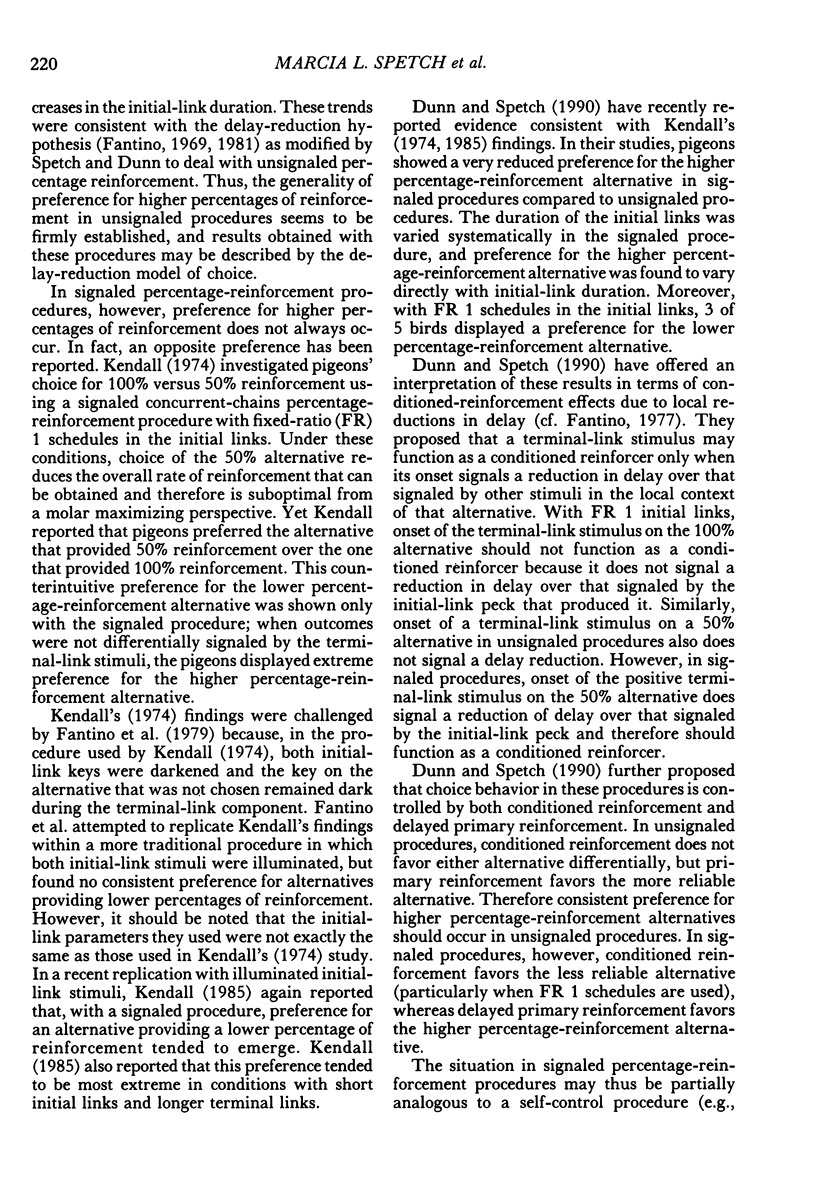
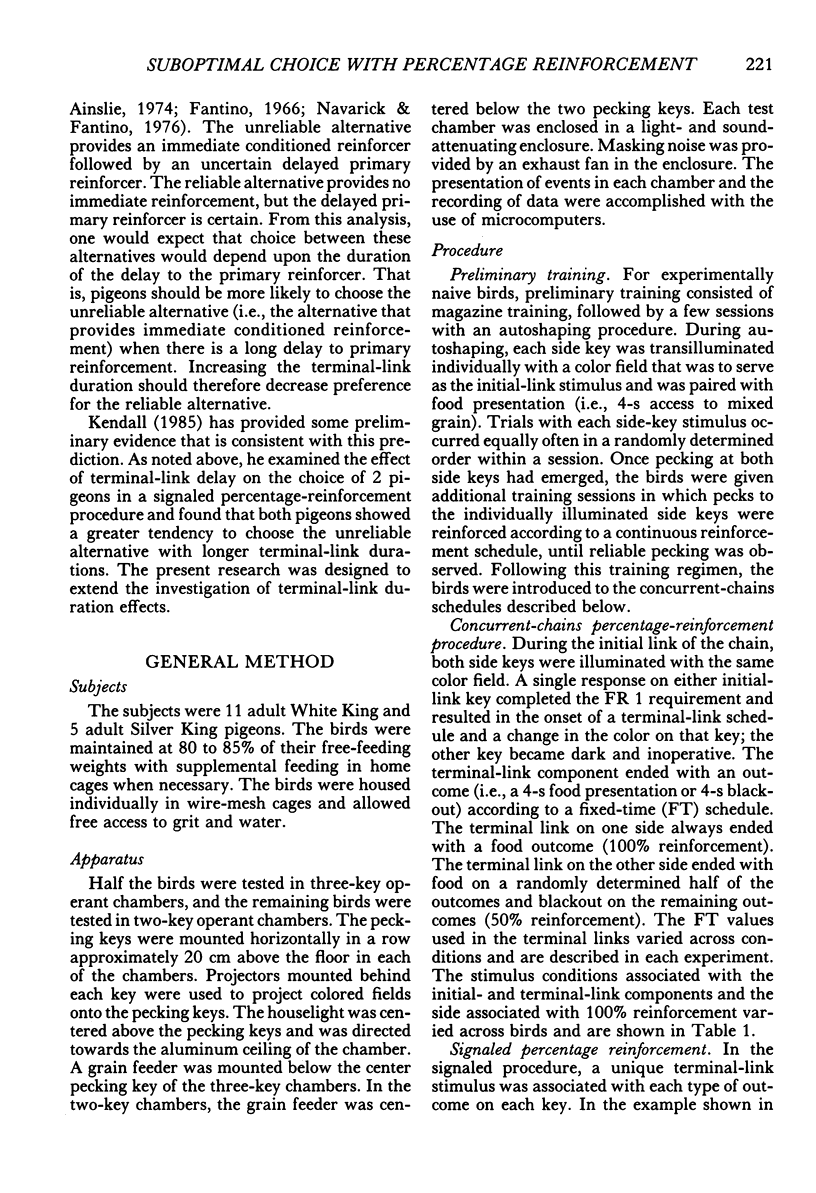
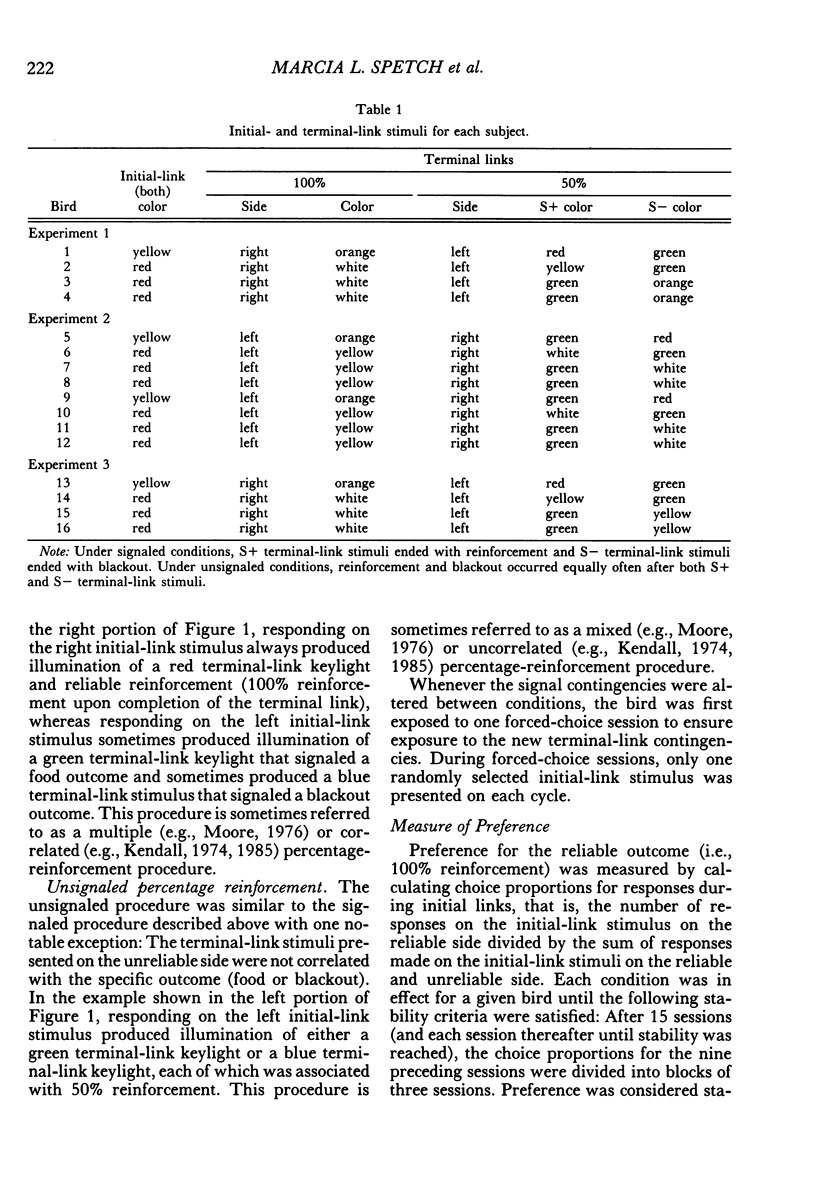
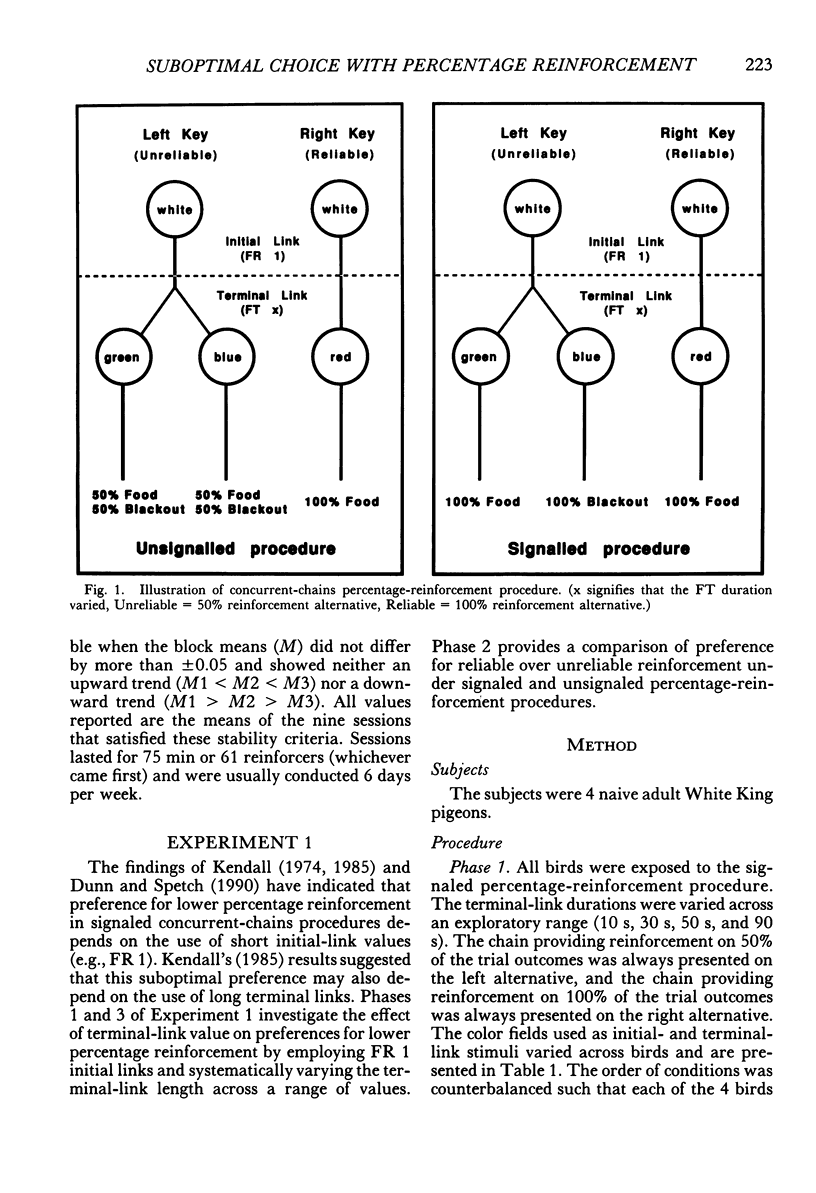
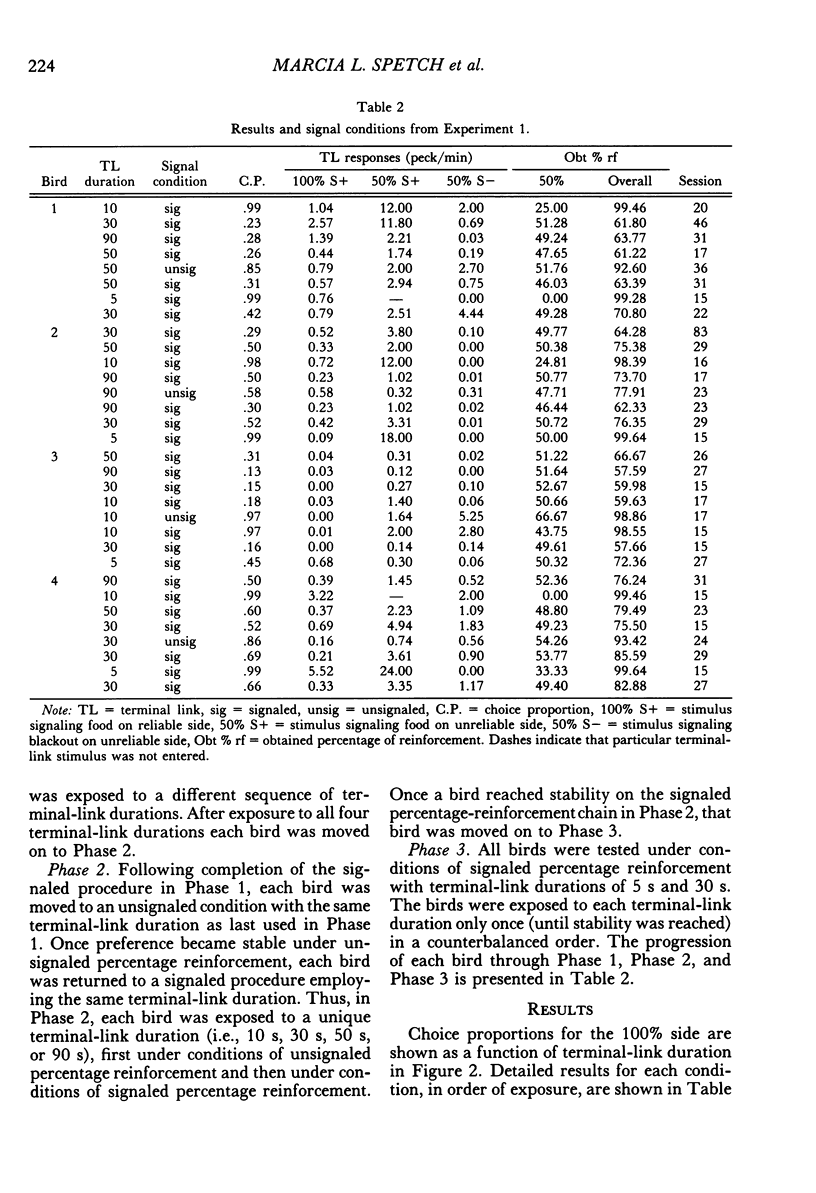
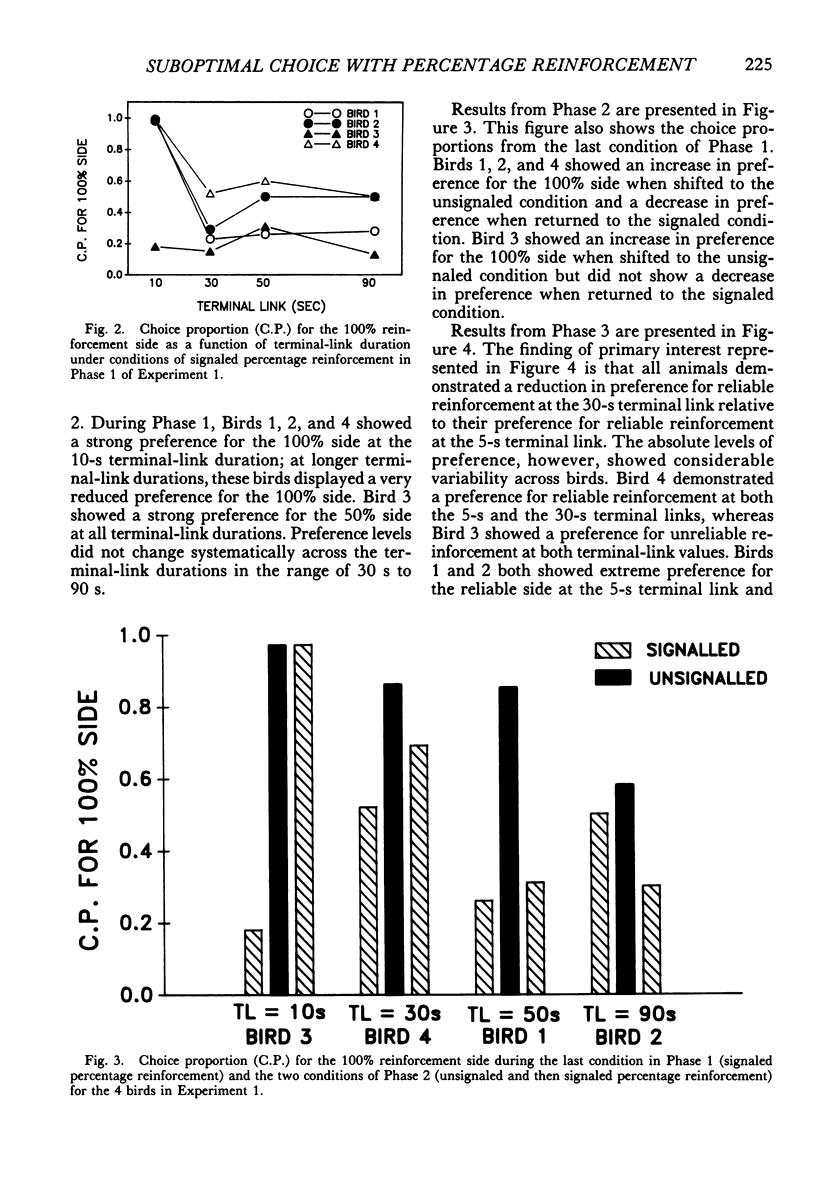
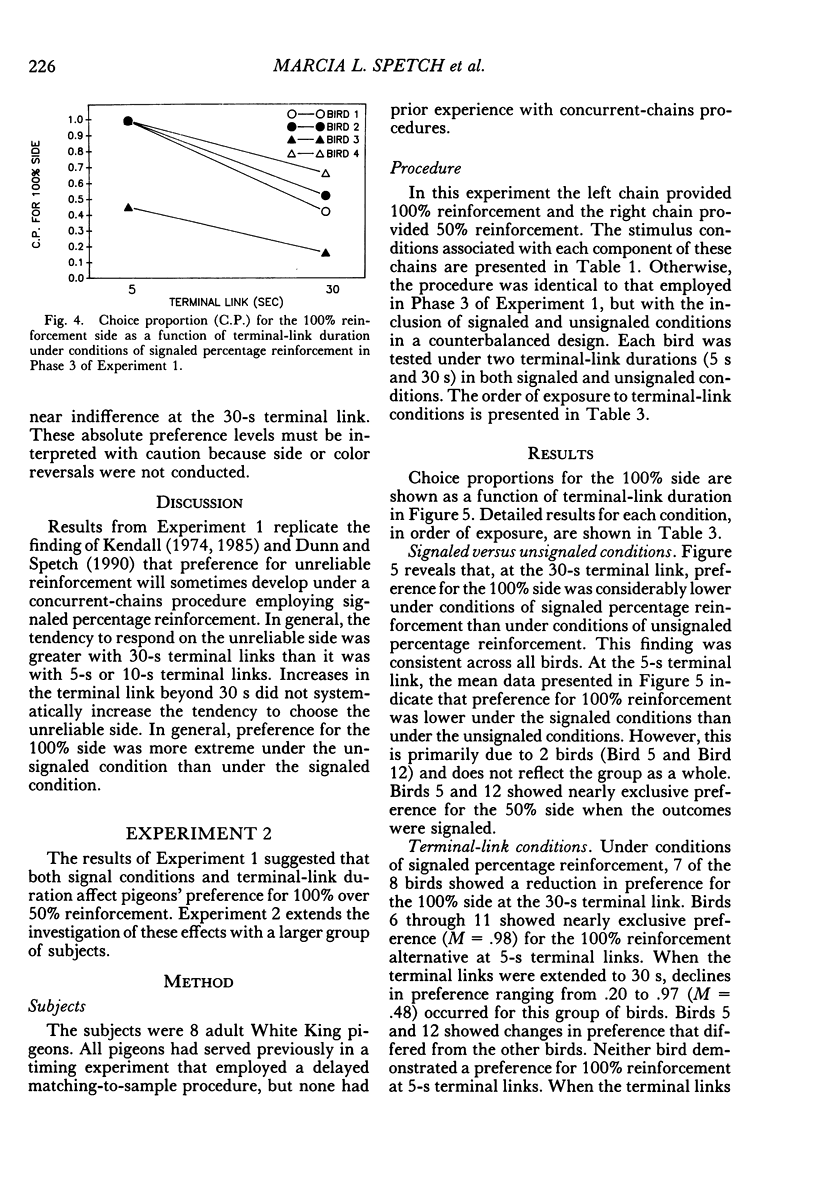
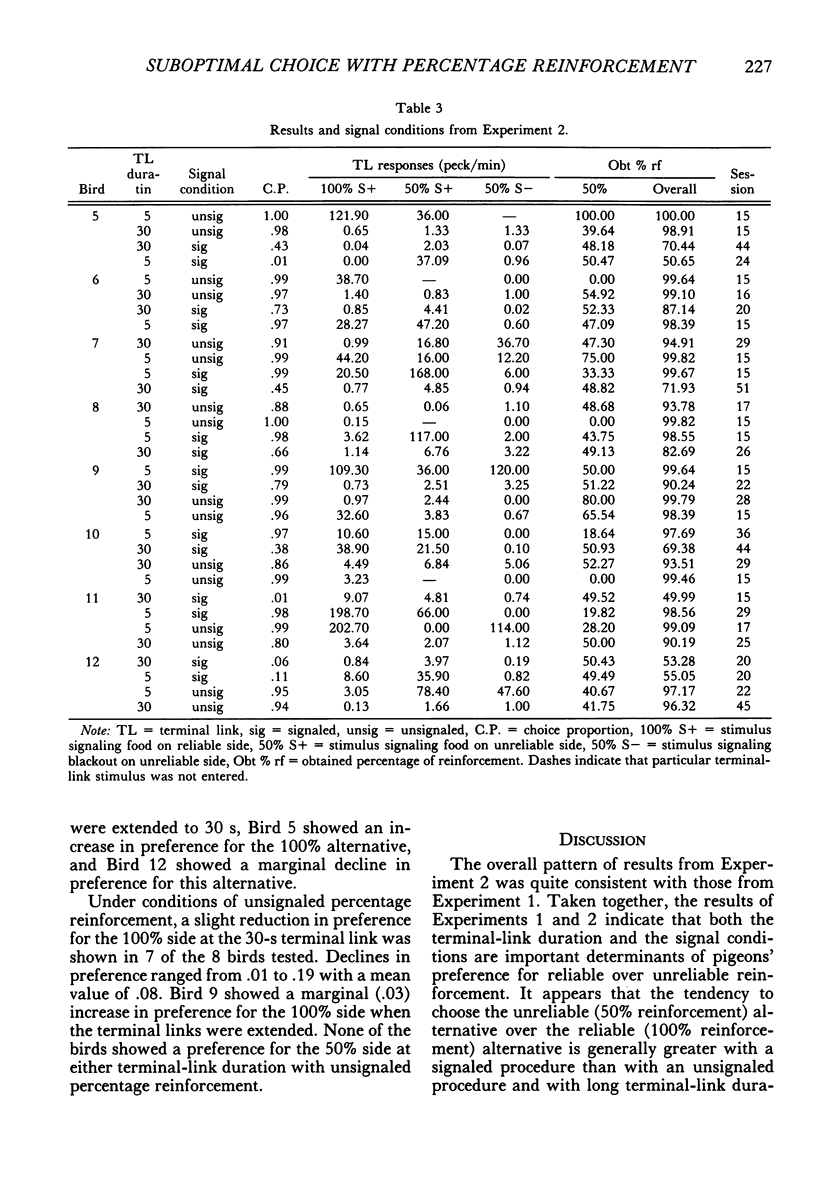
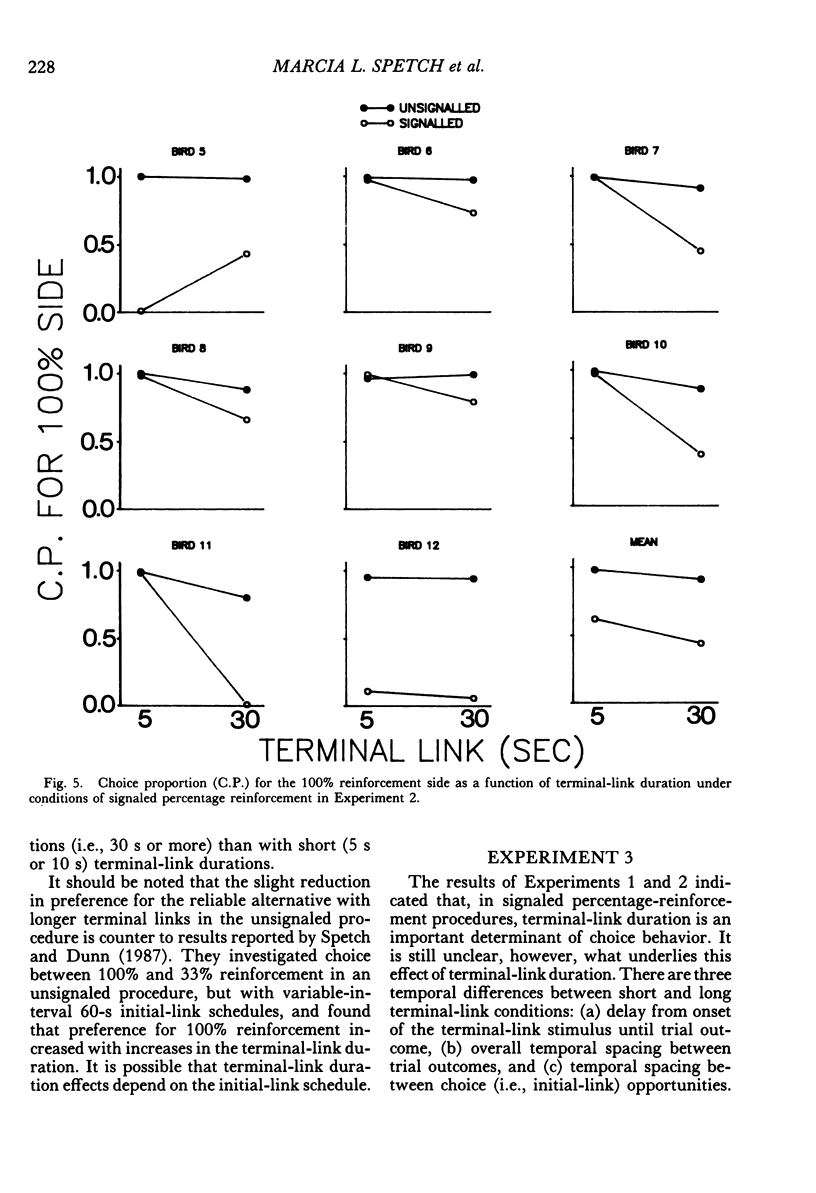
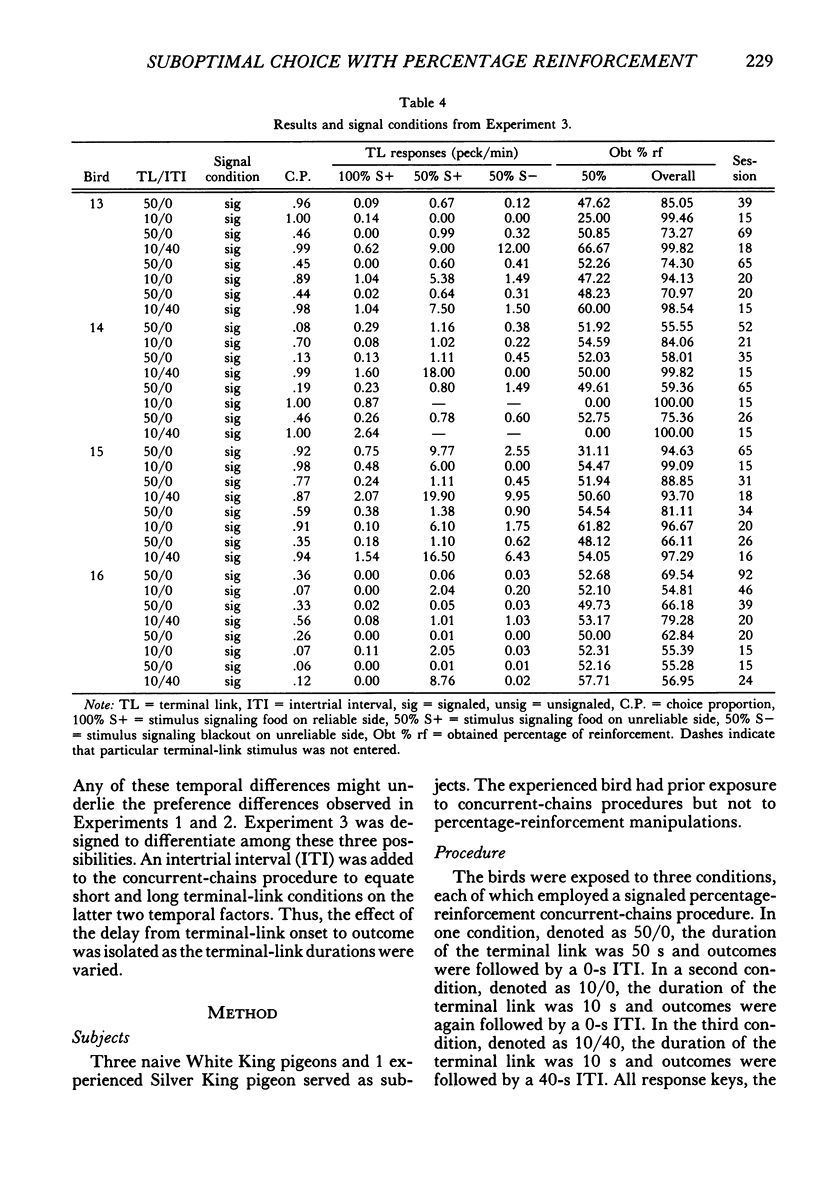
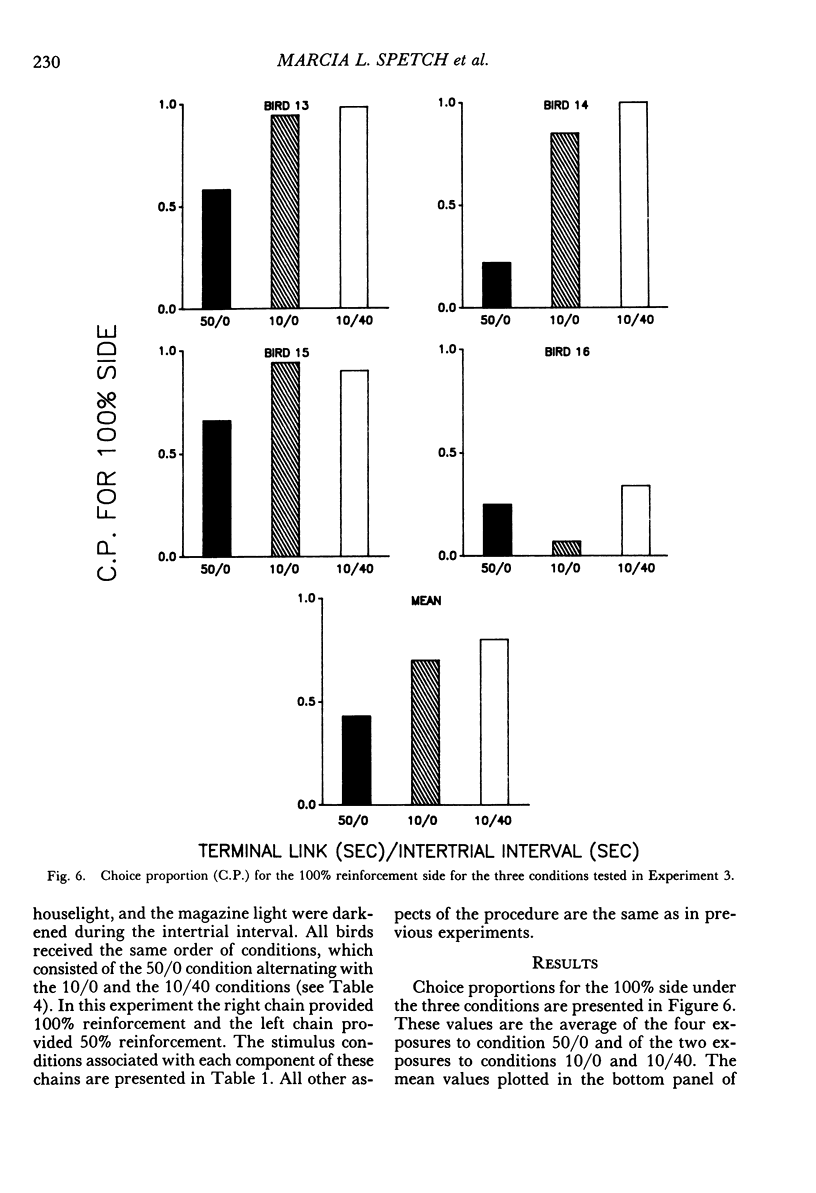
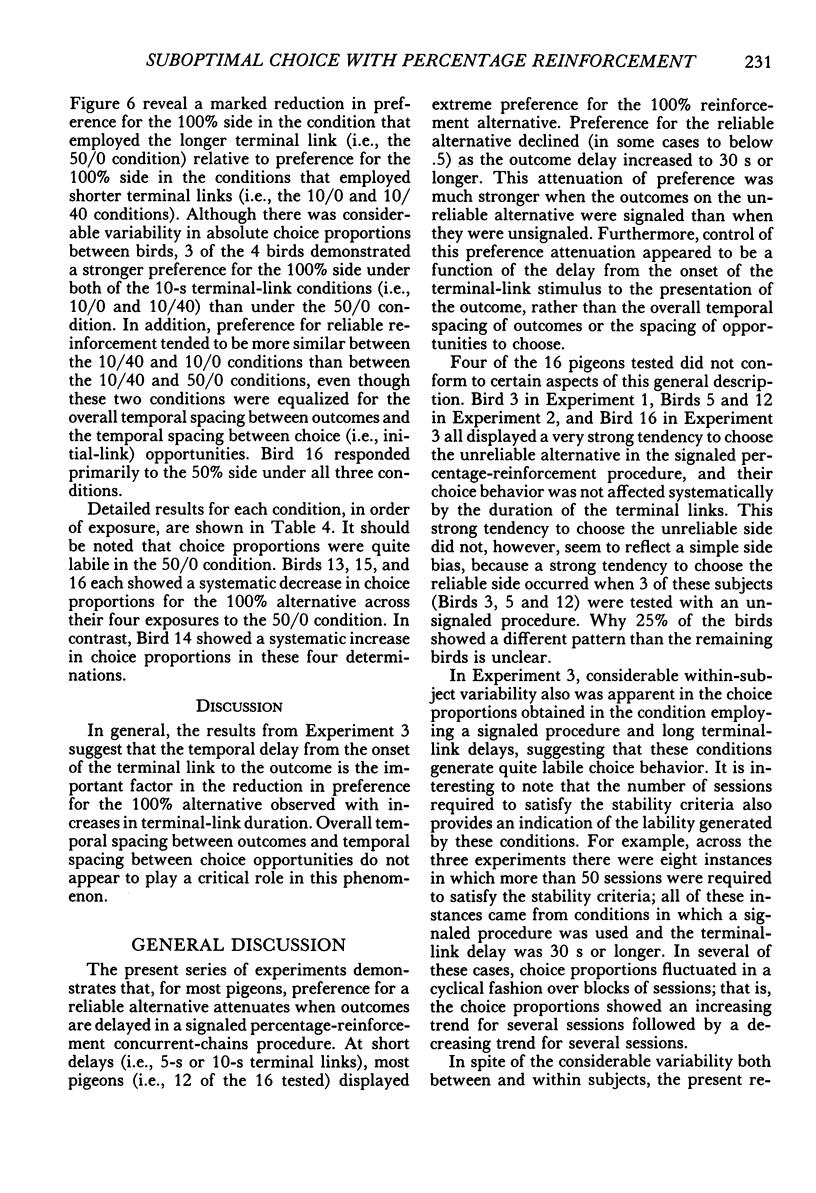
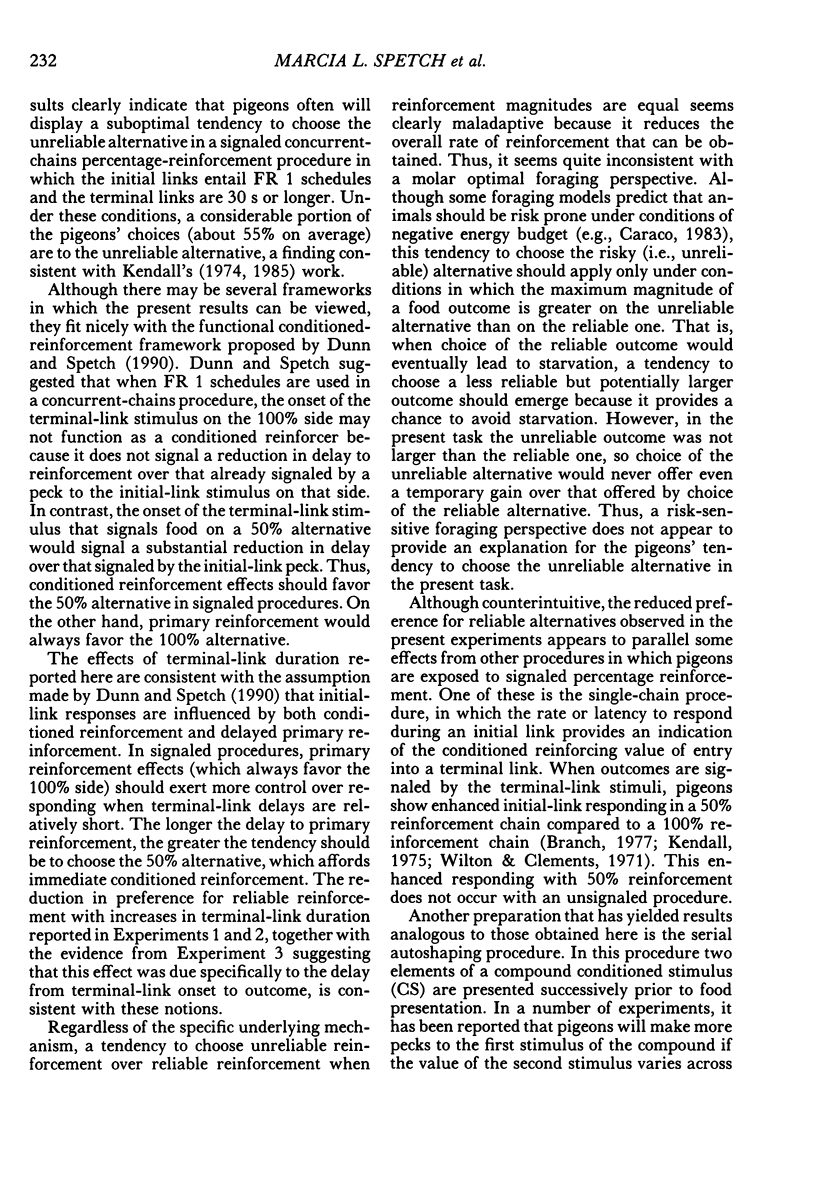
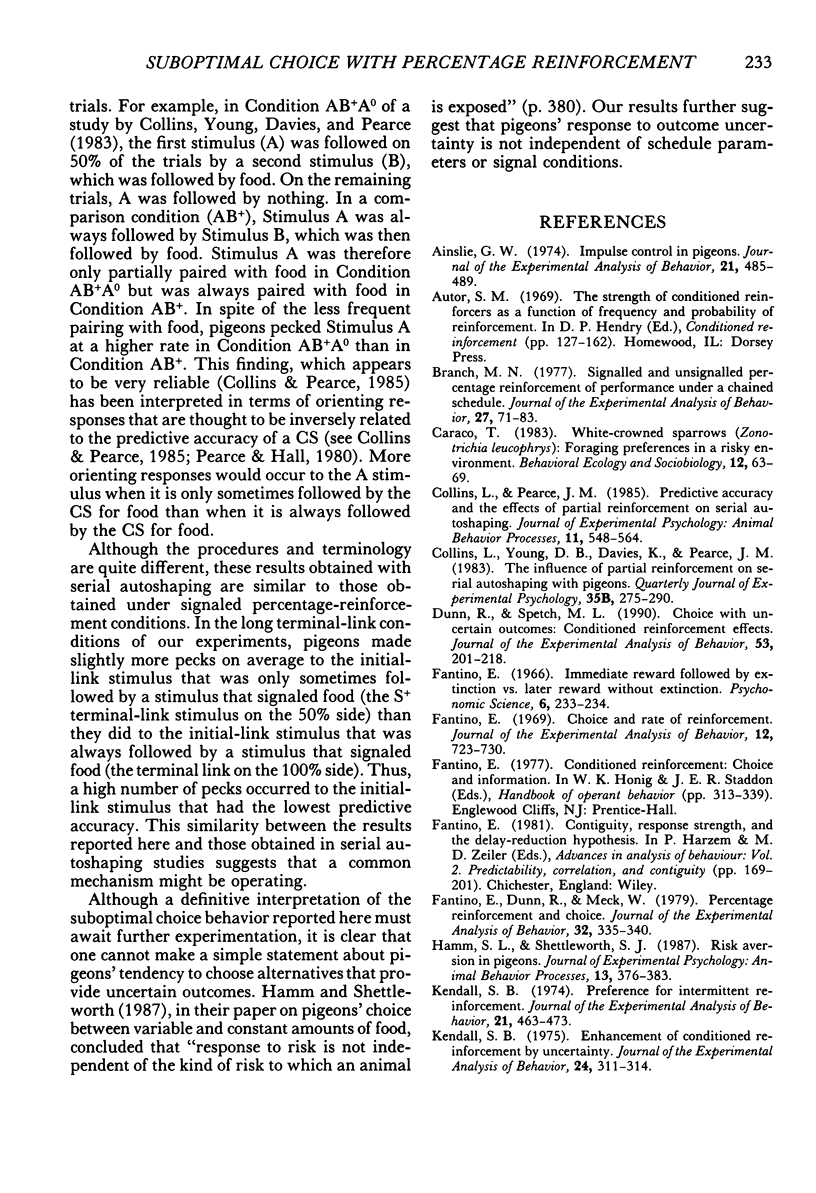
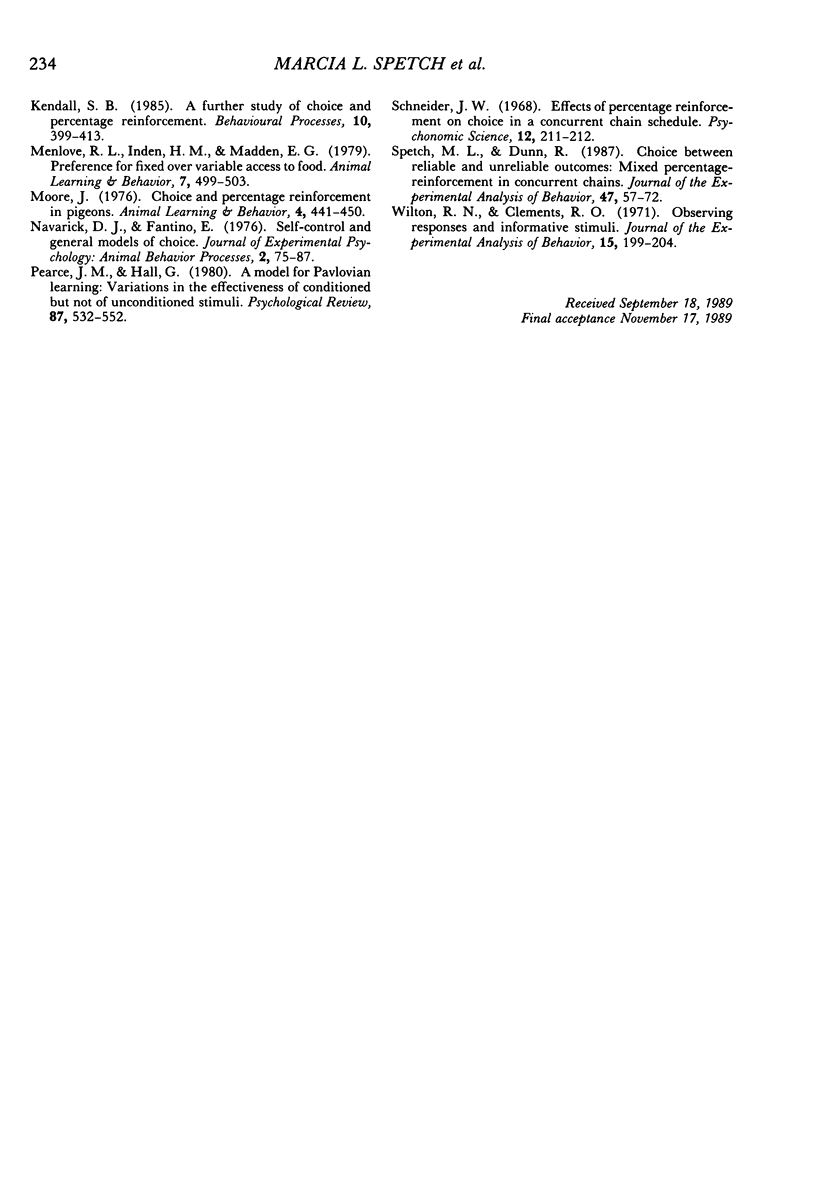
Selected References
These references are in PubMed. This may not be the complete list of references from this article.
- Ainslie G. W. Impulse control in pigeons. J Exp Anal Behav. 1974 May;21(3):485–489. doi: 10.1901/jeab.1974.21-485. [DOI] [PMC free article] [PubMed] [Google Scholar]
- Branch M. N. Signalled and unsignalled percentage reinforcement of performance under a chained schedule. J Exp Anal Behav. 1977 Jan;27(1):71–83. doi: 10.1901/jeab.1977.27-71. [DOI] [PMC free article] [PubMed] [Google Scholar]
- Collins L., Young D. B., Davies K., Pearce J. M. The influence of partial reinforcement on serial autoshaping with pigeons. Q J Exp Psychol B. 1983 Nov;35(Pt 4):275–290. doi: 10.1080/14640748308400893. [DOI] [PubMed] [Google Scholar]
- Dunn R., Spetch M. L. Choice with uncertain outcomes: conditioned reinforcement effects. J Exp Anal Behav. 1990 Mar;53(2):201–218. doi: 10.1901/jeab.1990.53-201. [DOI] [PMC free article] [PubMed] [Google Scholar]
- Fantino E. Choice and rate of reinforcement. J Exp Anal Behav. 1969 Sep;12(5):723–730. doi: 10.1901/jeab.1969.12-723. [DOI] [PMC free article] [PubMed] [Google Scholar]
- Fantino E., Dunn R., Meck W. Percentage reinforcement and choice. J Exp Anal Behav. 1979 Nov;32(3):335–340. doi: 10.1901/jeab.1979.32-335. [DOI] [PMC free article] [PubMed] [Google Scholar]
- Kendall S. B. Enhancement of conditioned reinforcement by uncertainty. J Exp Anal Behav. 1975 Nov;24(3):311–314. doi: 10.1901/jeab.1975.24-311. [DOI] [PMC free article] [PubMed] [Google Scholar]
- Kendall S. B. Preference for intermittent reinforcement. J Exp Anal Behav. 1974 May;21(3):463–473. doi: 10.1901/jeab.1974.21-463. [DOI] [PMC free article] [PubMed] [Google Scholar]
- Pearce J. M., Hall G. A model for Pavlovian learning: variations in the effectiveness of conditioned but not of unconditioned stimuli. Psychol Rev. 1980 Nov;87(6):532–552. [PubMed] [Google Scholar]
- Spetch M. L., Dunn R. Choice between reliable and unreliable outcomes: mixed percentage-reinforcement in concurrent chains. J Exp Anal Behav. 1987 Jan;47(1):57–72. doi: 10.1901/jeab.1987.47-57. [DOI] [PMC free article] [PubMed] [Google Scholar]
- Wilton R. N., Clements R. O. Observing responses and informative stimuli. J Exp Anal Behav. 1971 Mar;15(2):199–204. doi: 10.1901/jeab.1971.15-199. [DOI] [PMC free article] [PubMed] [Google Scholar]


